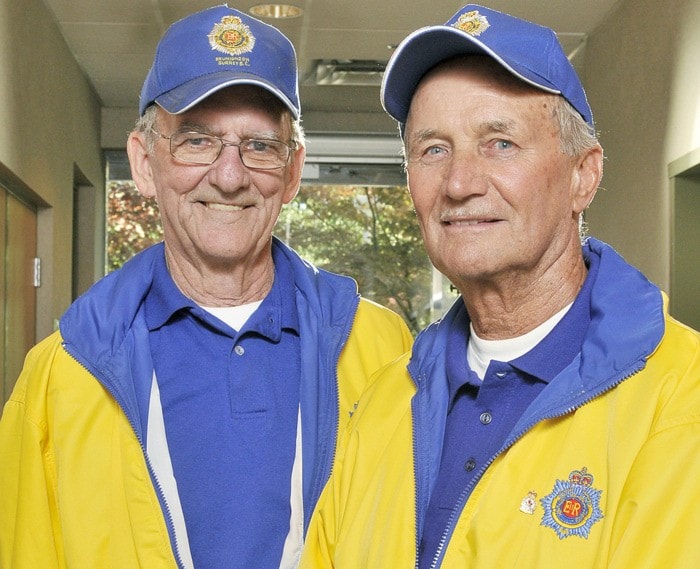History is repeating itself for Ken Diamond and Bob Fraser.
The two seniors are working logistics – transport, signals and administration – just like they did in the military decades ago – as they prepare for an invasion of veterans for a special reunion in Surrey.
Members of the Royal Canadian Army Service Corps (RCASC) will gather from Sept. 21-28 at Compass Point Inn (formerly The Days Inn) to reminisce about their now-disbanded regiment.
From 1901 to 1968, the RCASC was the backbone of the supply chain for the Canadian military, providing soldiers at war and in peacekeeping missions with the transportation, food, ammunition, medicine and other supplies to do their jobs.
During the Second World War, more than 100,000 Canadian soldiers were members of the RCASC.
“We were originally the supply and transport wing of the army,” says Diamond, 69, who worked in administrative roles on bases in Canada from 1957-67. “We also supplied the navy and air force.”
He calls them “unsung heroes” who played an important part of their missions.
The independence of the RCASC – and much of its esprit de corps – disappeared following the “unification” of all wings of the Canadian military in 1968.
Under the Canadian Forces Reorganization Act, the Canadian Army, the Royal Canadian Air Force (RCAF) and the Royal Canadian Navy (RCN) were integrated under one umbrella, the Canadian Armed Forces.
Then-Minister of National Defence Paul Hellyer drew the ire of RCASC personnel, who were integrated into the Logistics Branch of the new entity.
“We lost a lot of good men because of that,” says Fraser, a member of the 2011 reunion committee.
“(Hellyer) decided that (everyone) should be in one uniform – he made us all look like bus drivers,” says Diamond, the president of the Western Region of the RCASC.
Although some stayed in the service and continued to do the types of work they did before, the proud members of the pre-1968 unit decided to keep their identity intact by forming their own association.

There are about 2,000 members in the RCASC association in four regions across the country, with no young blood to replace the aging members.
About 200 are expected to come for the annual, week-long reunion – the first one to be held in Surrey.
Among them will be just a handful of Second World War veterans. The rest will be those who stayed in Canada, participated in peacekeeping missions or in the Korean War.
Fraser, now 75, served with the 56 Transport Company in the Canadian component of the United Nations Emergency Force, which was sent to the Sinai Desert following the 1956 Suez Crisis.
Although RCASC personnel were not front-line troops, many were wounded or killed during the unit’s 67-year history.
Diamond says that during the Second World War in Europe, truck convoys were often the first targets for German fighter-bombers.
There were also dangers during peacekeeping.
Fraser, who spent a year in the Sinai, recalls having to steer his truck directly on the track marks of an armoured car in front of him as they drove through a minefield.
Just this summer, the Canadian Armed Forces have split up their branches again, resurrecting the names of the Canadian Army, the RCAF and the RCN.
The RCASC, however, remains part of history, since the personnel that are its descendants remain under the control of the Logistics Branch.
For more information, visit http://rcasc.org
bjoseph@surreyleader.com
